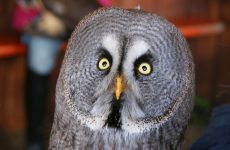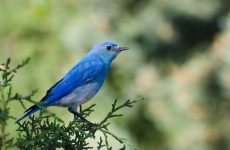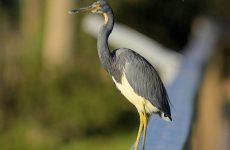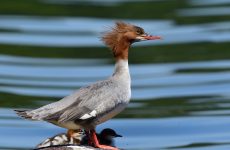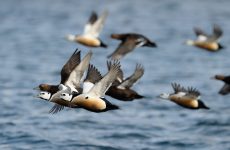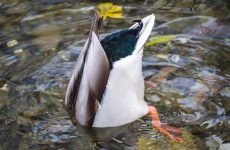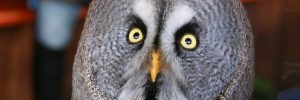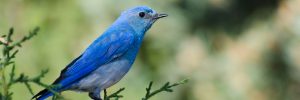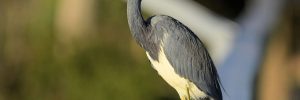If you need help identifying birds with black heads in North America, then you have come to the right place. Get photos, identification help, bird calls, and what you need to know about where you might spot them and at what time of year.
All this information will really help you to identify those birds with black heads. So take a look and see if you can spot the bird you are looking for.
19 Birds With Black Heads:
1. Black-capped Chickadee
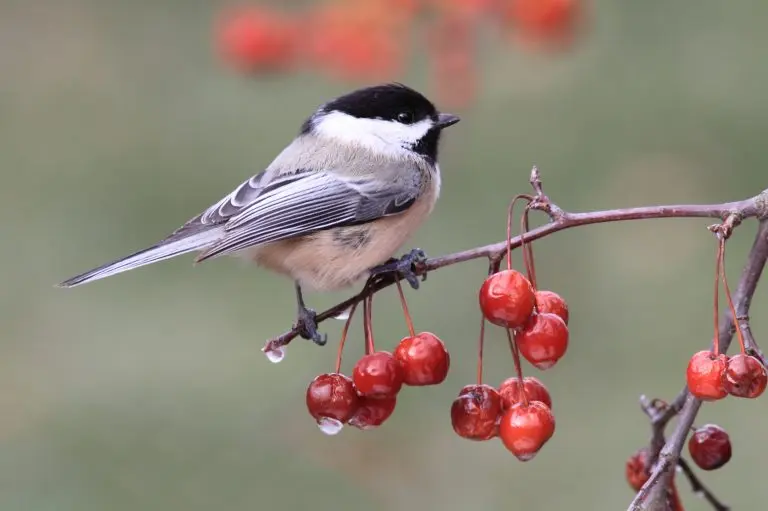
The Black-capped Chickadee is a cute bird with a big round head and tiny body. These birds will happily feed at backyard feeders and investigate everything, including you!
They have black caps and beaks, white cheeks, and are gray on the back, wings, and tail.
- Poecile atricapillus
- Length: 4.7-5.9 in (12-15 cm)
- Weight: 0.3-0.5 oz (9-14 g)
- Wingspan: 6.3-8.3 in (16-21 cm)
Black-capped Chickadees do not migrate and can be spotted in the northern half of the US and Canada.
You can find them in forests, open woods, and parks. Black-capped Chickadees eat seeds, berries and insects, spiders, and suet.
Black-capped Chickadee Call/Song:
Attract Black-capped Chickadees to your backyard with suet, sunflower seeds, and peanuts or peanut butter. They will even feed from your hand and are often one of the first birds to discover new feeders. They will also use nest boxes, especially if you fill them with wood shavings.
2. White-breasted Nuthatch
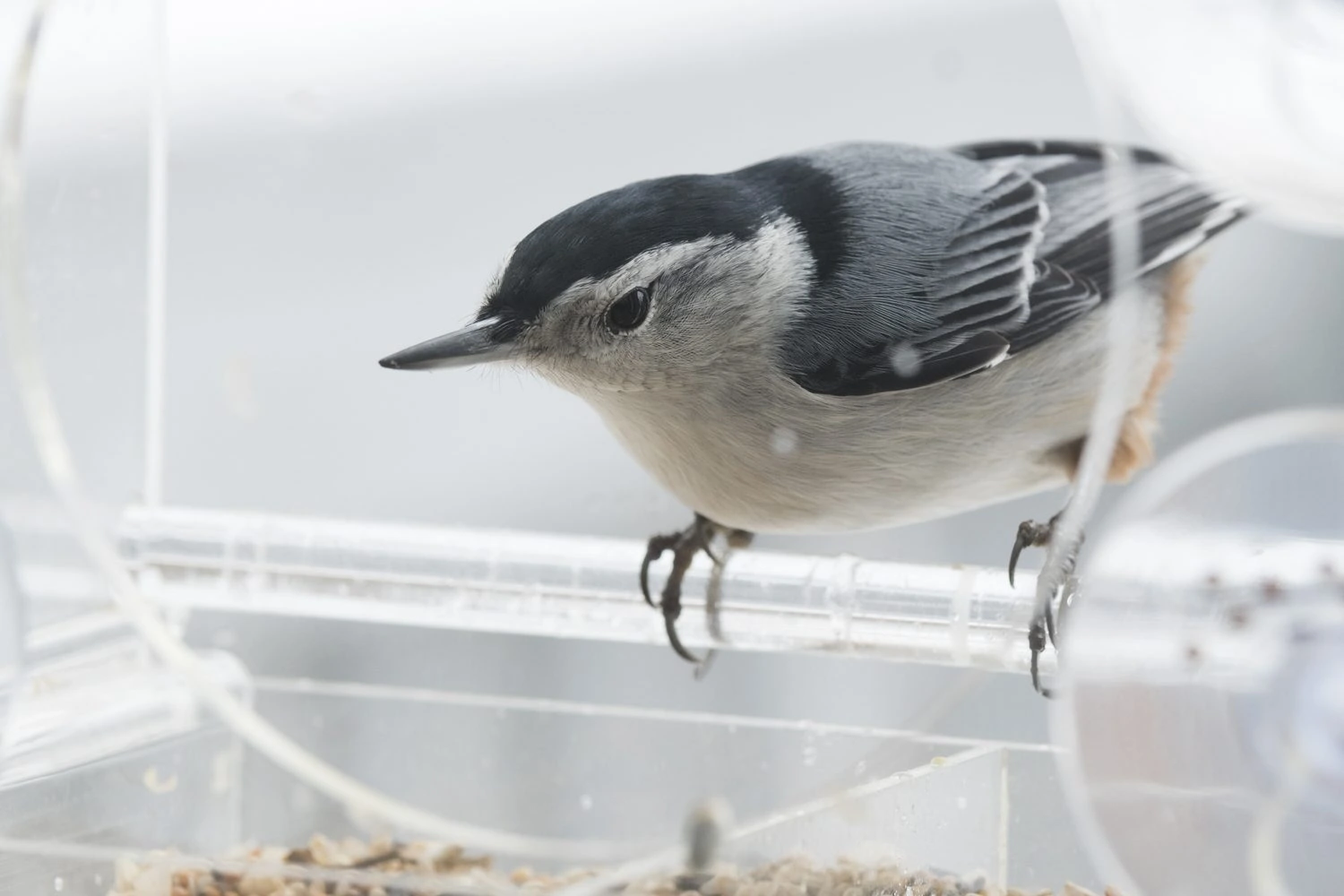
White-breasted Nuthatches are active little birds that are gray-blue on the back and white on the face and belly, with a black cap. They will often have a chestnut color on the lower belly and under the tail.
- Sitta carolinensis
- Length: 5.1-5.5 in (13-14 cm)
- Weight: 0.6-1.1 oz (18-30 g)
- Wingspan: 7.9-10.6 in (20-27 cm)
White-breasted Nuthatches live all year in the US and southern Canada.
You can find White-breasted Nuthatches in deciduous forests, woodland edges, parks, and yards with trees or at feeders. They mainly eat insects, including beetles and their larvae, caterpillars, ants, and also spiders.
White-breasted Nuthatches also eat seeds and nuts, including acorns, hawthorns, sunflower seeds, and sometimes corn crops. They jam large nuts and acorns into tree bark and then whack them with their bills to open or ‘hatch’ them to get the seed out.
White-breasted Nutcracker Call:
Attract White-breasted Nuthatches to your backyard with sunflower seeds and peanuts on tube feeders or suet feeders.
3. Carolina Chickadee
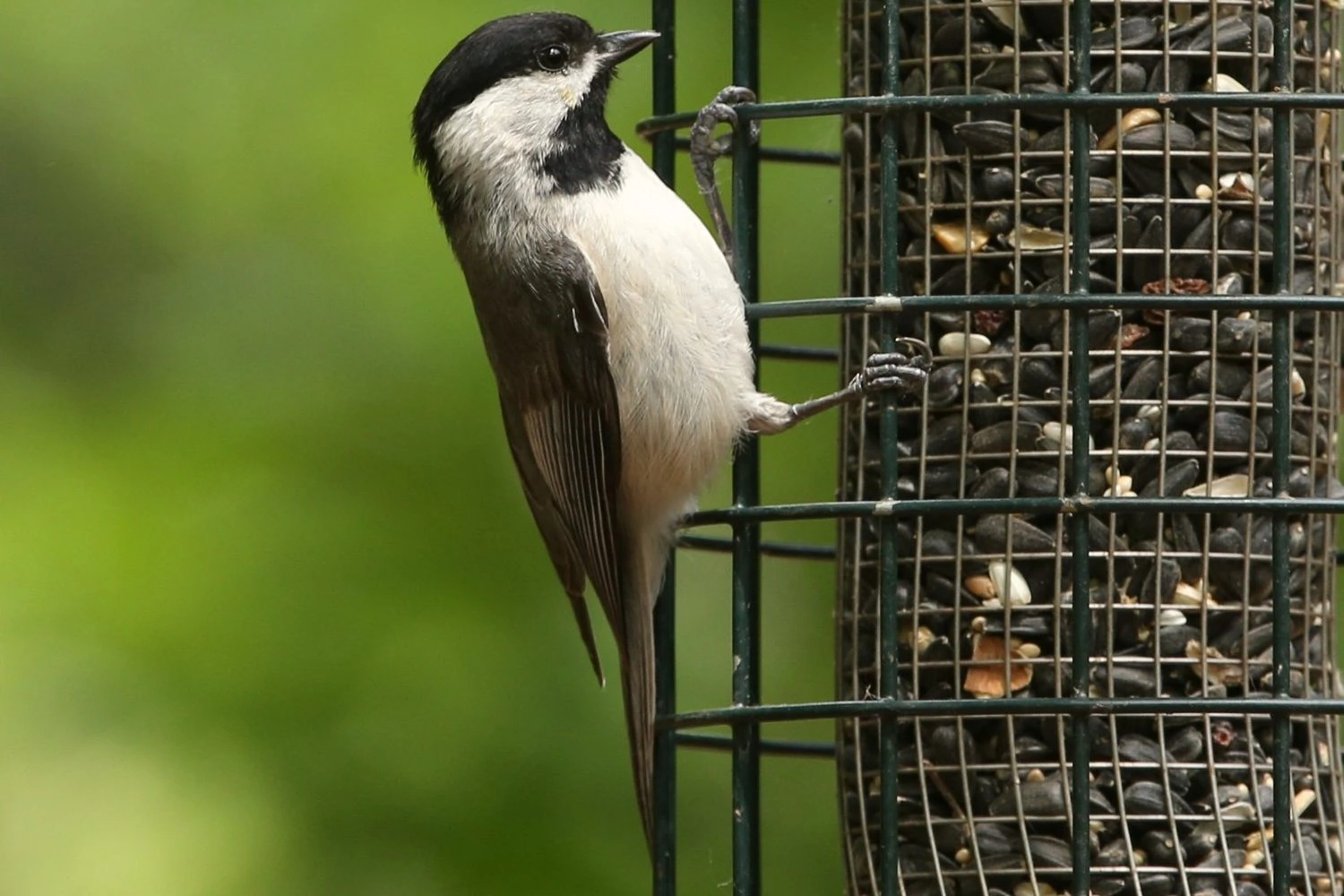
Carolina Chickadees are tiny birds with large heads, black caps and necks, white cheeks and bellies, and soft gray backs, wings, and tails.
They are visually very similar to the Black-capped Chickadee, and they interbreed where their range overlaps.
- Poecile carolinensis
- Length: 3.9-4.7 in (10-12 cm)
- Weight: 0.3-0.4 oz (8-12 g)
- Wingspan: 5.9-7.9 in (15-20 cm)
Carolina Chickadees can be found in forested areas, parks, and backyards in eastern and southeastern US states all year.
Carolina Chickadee Song:
Attract Carolina Chickadees to your backyard feeders with black oil sunflower seeds, nyjer seeds, suet feeders, or peanuts. They will feed on most types of feeders, including tube feeders, suet cages, or platform feeders. They will also nest in nest boxes or nest tubes.
4. Barn Swallow
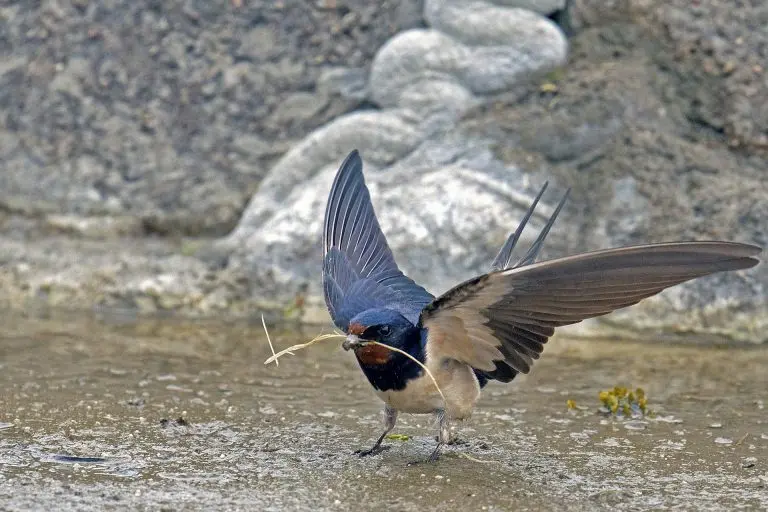
Barn Swallows are small birds with a deep-blue back, wings and tail, and reddish-brown underneath and across the face. Their tail has long outer feathers that give a deep fork. The dark color of their back can make them look black-and-white.
- Hirundo rustica
- Length: 5.9-7.5 in (15-19 cm)
- Weight: 0.6-0.7 oz (17-20 g)
- Wingspan: 11.4-12.6 in (29-32 cm)
Barn Swallows breed in Canada and the US before heading to Central and South America. They can be found flying over meadows, farms, and fields looking for insects and usually build mud nests on man-made structures such as in barns.
Barn Swallow call:
Attract Barn Swallows by putting up nest boxes or cups, and they may eat ground-up eggshells on a platform feeder.
5. Eastern Phoebe
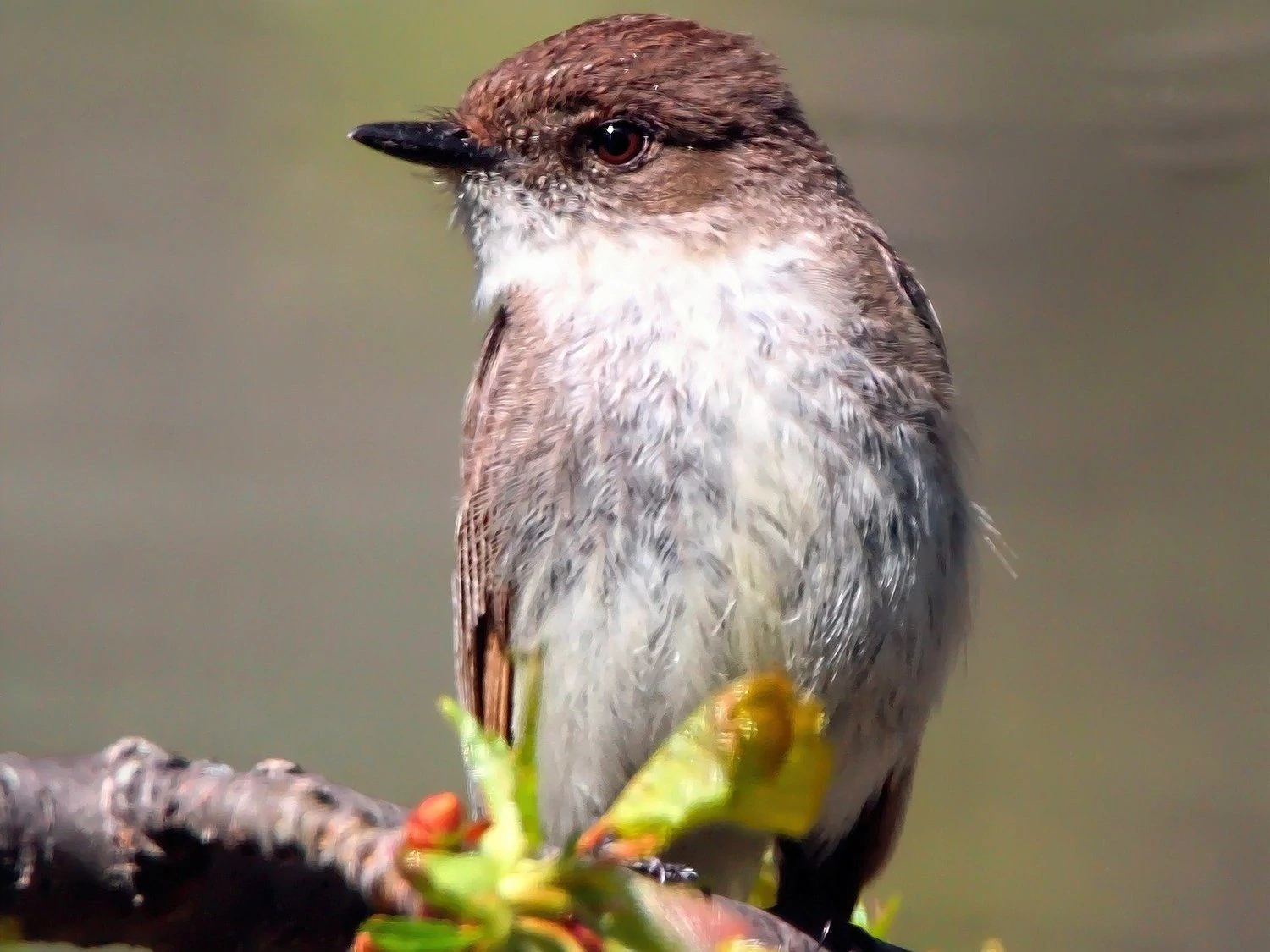
Eastern Phoebes are plump songbirds that are grayish-brown on the back and whitish underneath and with a darker head.
- Sayornis phoebe
- Length: 5.5-6.7 in (14-17 cm)
- Weight: 0.6-0.7 oz (16-21 g)
- Wingspan: 10.2-11.0 in (26-28 cm)
Eastern Phoebes are migratory birds, breeding across northeastern and central US states and into Canada before migrating to southeastern US states and Mexico for winter. Some birds may remain all year towards the south of their range.
Eastern Phoebes tend to be found alone in quiet woodland, wagging their tails from low perches rather than in pairs or flocks.
As they are flycatchers, flying insects make up the most of their diet, but they will also eat spiders and other insects, small fruit, and seeds. They often nest on bridges and barns or houses, making a nest out of mud and grass.
Eastern Phoebe Song:
Attract Eastern Phoebes to your backyard by putting up a nest box or native plants that produce berries.
6. Eastern Towhee
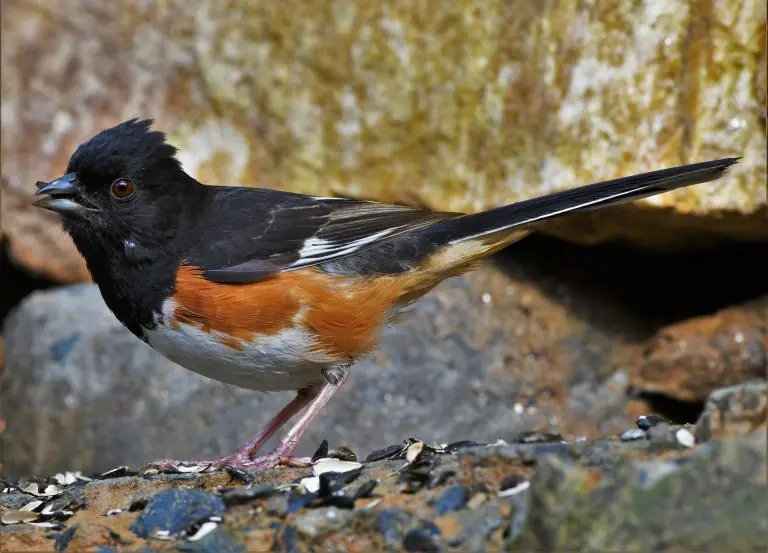
Eastern Towhees are striking large sparrows, about the size of Robin, with a black head, throat, and back, reddish sides, long tails, and a white belly in the males. The females are similar but brown instead of black.
- Pipilo erythrophthalmus
- Length: 6.8-8.2 in (17.3-20.8 cm)
- Weight: 1.1-1.8 oz (32-52 g)
- Wingspan: 7.9-11.0 in (20-28 cm)
Eastern Towhees live all year in southeastern US states, but birds further north move south for the winter.
You can find Eastern Towhees rummaging in the undergrowth along the edges of forests and thickets.
Eastern Towhee Song:
Attract Eastern Towhees to your backyard with overgrown borders, and they will also visit platform feeders for black oil sunflower seeds, hulled sunflower seeds, cracked corn, and millet.
7. Spotted Towhee
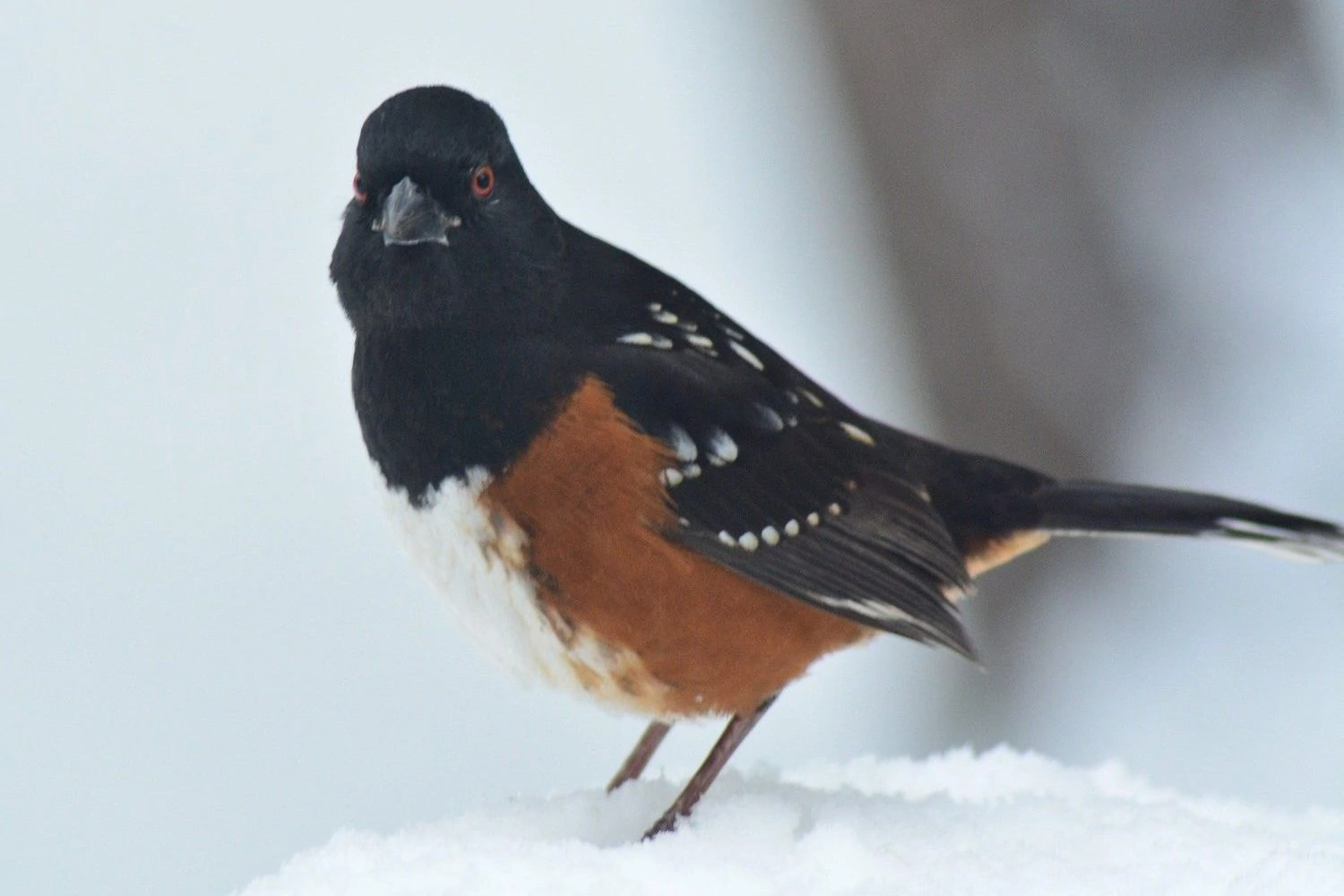
Spotted Towhees are large sparrows that are black on their head, throat, and back in the males and brown in the females. Both males and females have reddish-brown sides, white bellies, and white spots on the wings and back. They have long tails and are about the size of a Robin.
- Pipilo maculatus
- Length: 6.7-8.3 in (17-21 cm)
- Weight: 1.2-1.7 oz (33-49 g)
- Wingspan: 11.0 in (28 cm)
Spotted Towhees live in western US states, but those in the interior of the north migrate south after breeding to Texas and surrounding areas.
You can find Spotted Towhees on the ground in dense tangles of shrubs scratching around for insects, including beetles, crickets, grasshoppers, caterpillars, wasps, and bees. They also eat acorns, berries, and seeds.
Spotted Towhee Song:
Attract Spotted Towhees to your yard if you leave overgrown borders, and they will visit platform feeders or ground feeders for black oil sunflower seeds, hulled sunflower seeds, cracked corn, millet, and milo.
8. Rose-breasted Grosbeak
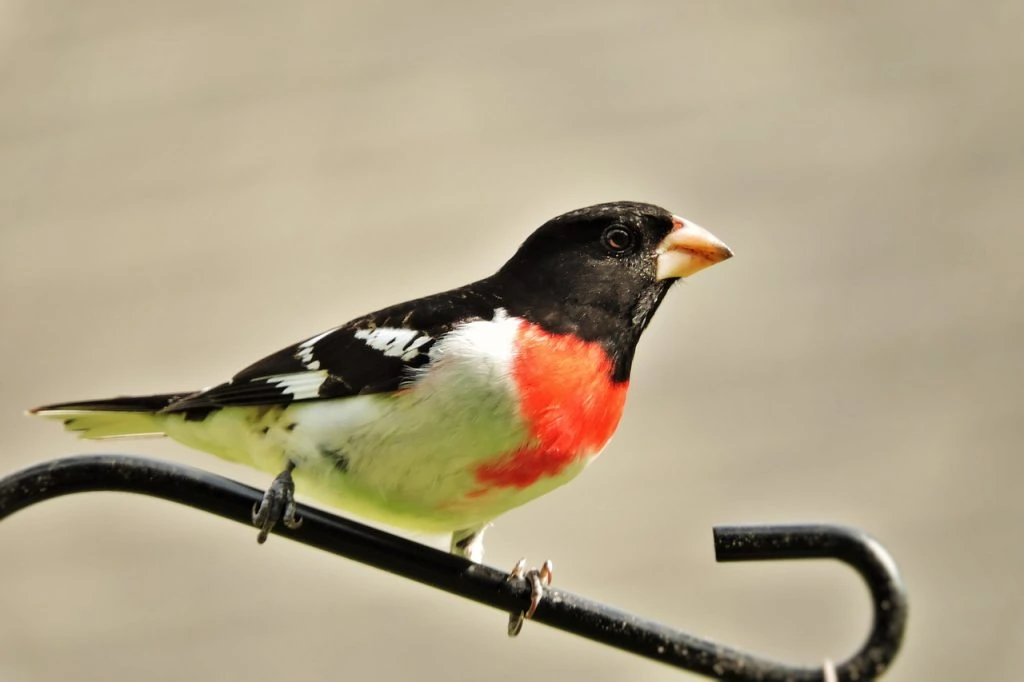
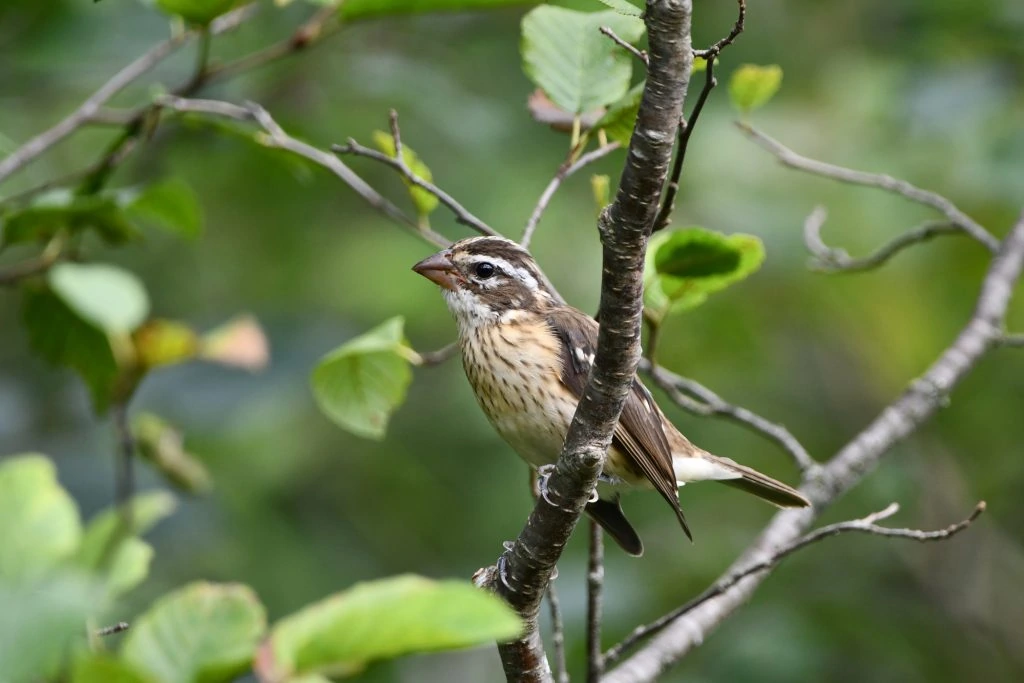
Rose-breasted Grosbeaks males are black-and-white birds with black heads and backs, white bellies, and red breasts. They also have a flash of red under their wings.
Female Rose-breasted Grosbeaks and immature males are brown with lots of streaking and a flash of yellow under the wings.
- Pheucticus ludovicianus
- Length: 7.1-8.3 in (18-21 cm)
- Weight: 1.4-1.7 oz (39-49 g)
- Wingspan: 11.4-13.0 in (29-33 cm)
Rose-breasted Grosbeaks breed in northeastern US states, the Midwest, and southern and central Canada. They can be seen during migration in southeastern US states. Winter is spent in Mexico, Central America, and the Caribbean.
Rose-breasted Grosbeaks Song:
Attract Rose-breasted Grosbeaks to your backyard with sunflower seeds and peanuts.
9. Baltimore Oriole
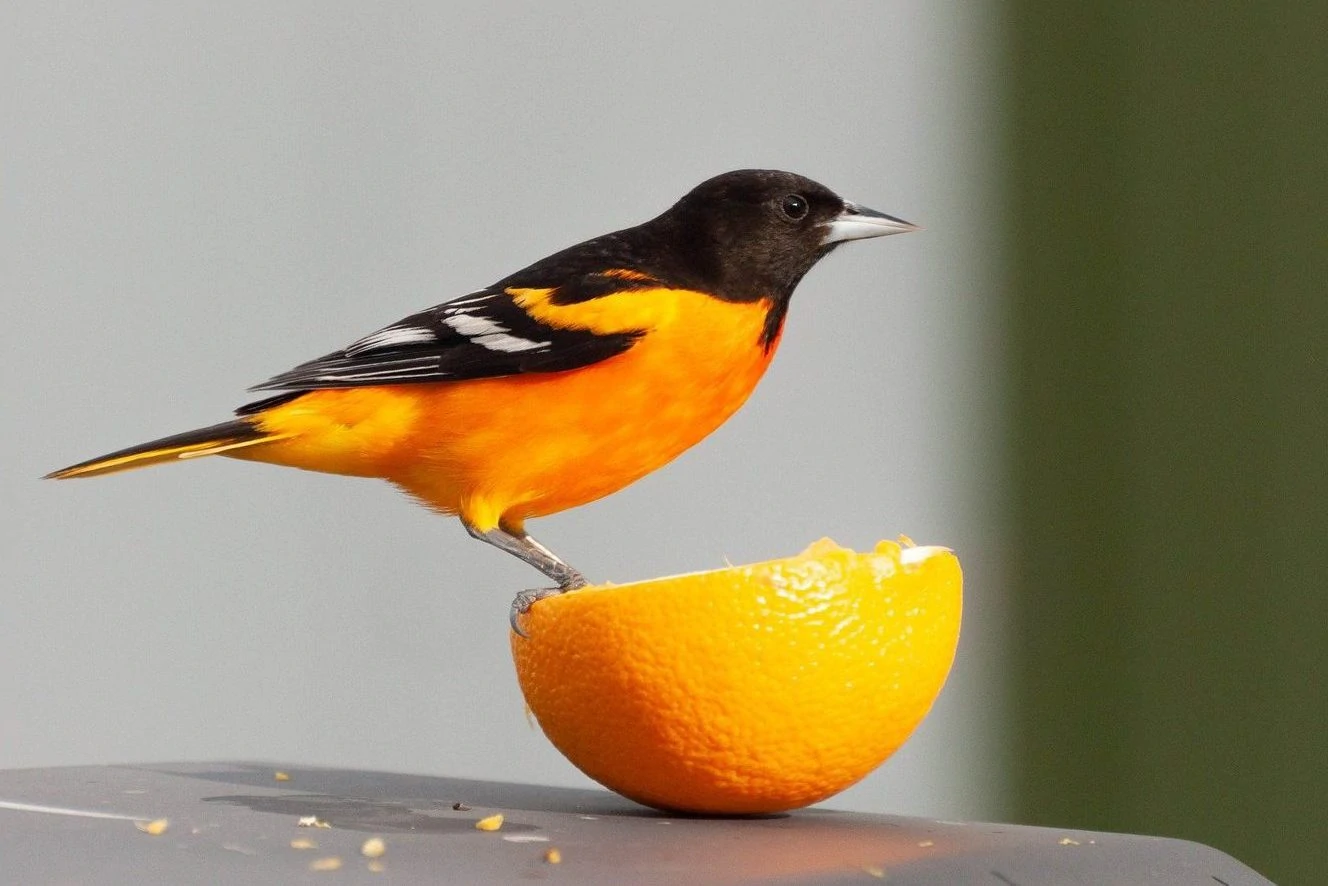
Baltimore Orioles are a colorful sign of spring in the east of North America, and they are members of the blackbird family. Adult males are bright orange and black with white wing bars on the black wings. They have black heads and backs and are orange underneath.
Females are mostly dull yellow and brown. They are yellowish underneath and on their heads, grayish-brown on the wings, and brownish-yellow on their backs.
- Icterus galbula
- Length: 6.7-7.5 in (17-19 cm)
- Weight: 1.1-1.4 oz (30-40 g)
- Wingspan: 9.1-11.8 in (23-30 cm)
Baltimore Orioles breed in eastern US States and central US states, including central-southern Canadian provinces and along the southern border with the US.
For winter, they migrate to Florida, Central America, and the Caribbean, leaving as early as July.
You can find Baltimore Orioles high up in open woodland, riverbanks, and forest edges foraging for insects and fruit, and they often come to parks and backyards. They make incredible hanging bag-like nests woven from fibers.
Baltimore Orioles’ diet is insects such as beetles, crickets, grasshoppers, as well as spiders, and snails, and they help eat pest species. However, they eat a wide variety of fruits and can damage crops such as raspberries, mulberries, cherries, bananas, and oranges.
Baltimore Oriole Song:
Attract Baltimore Orioles to your yard with oranges cut in half on platform feeders or hanging from trees. Also, oriole feeders filled with sugar water and plant fruit and nectar sources such as raspberries, crab apples, and trumpet vines.
10. Orchard Oriole
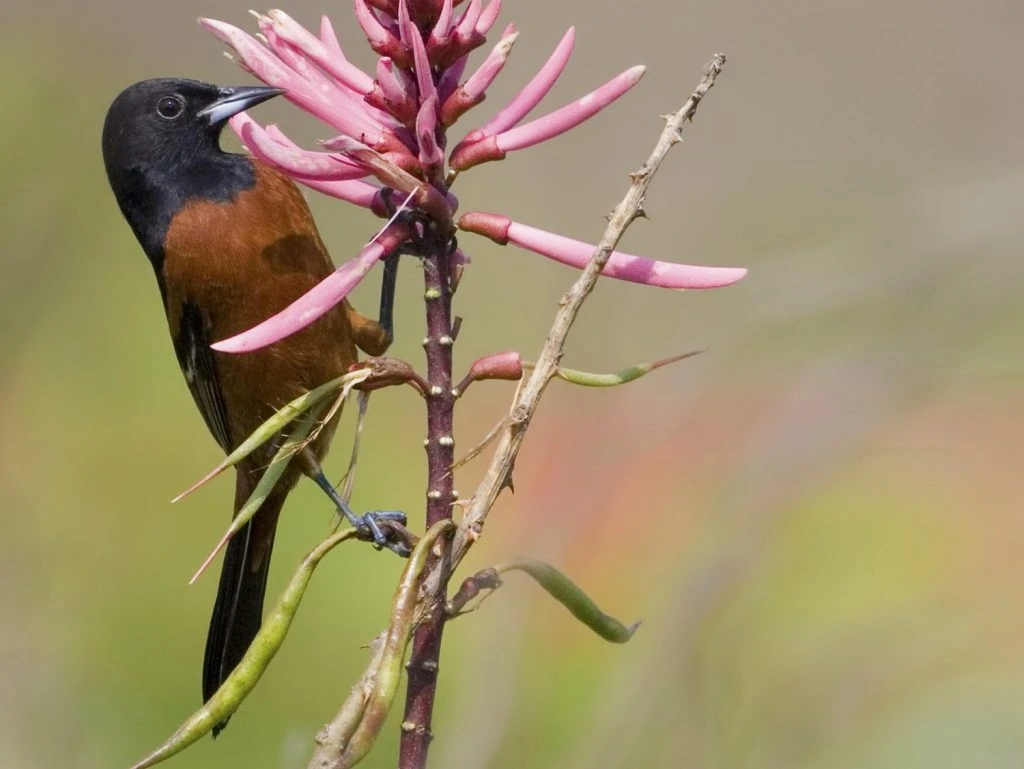
Orchard Oriole males have black heads and backs and reddish undersides. Females look pretty different and are greenish-yellow overall, paler underneath and darker on the back, with darker wings and white wingbars.
- Icterus spurius
- Length: 5.9-7.1 in (15-18 cm)
- Weight: 0.6-1.0 oz (16-28 g)
- Wingspan: 9.8 in (25 cm)
In summer, Orchard Orioles breed in central and eastern US states before migrating south to Mexico and Central America.
You can find Orchard Orioles in open woodland, along river banks, open shrubland, farms, and backyards. They build hanging pouch-like nests.
Orchard Orioles’ diet is mostly insects such as ants, caterpillars, beetles, grasshoppers, and spiders. They will also drink nectar from flowers and eat fruit like mulberries and chokeberries.
Orchard Oriole Song:
Attract Orchard Orioles to your yard with hummingbird feeders or platform feeders with cut oranges or mango. Also, plant native berry plants such as mulberries or chokeberries.
11. American Redstart
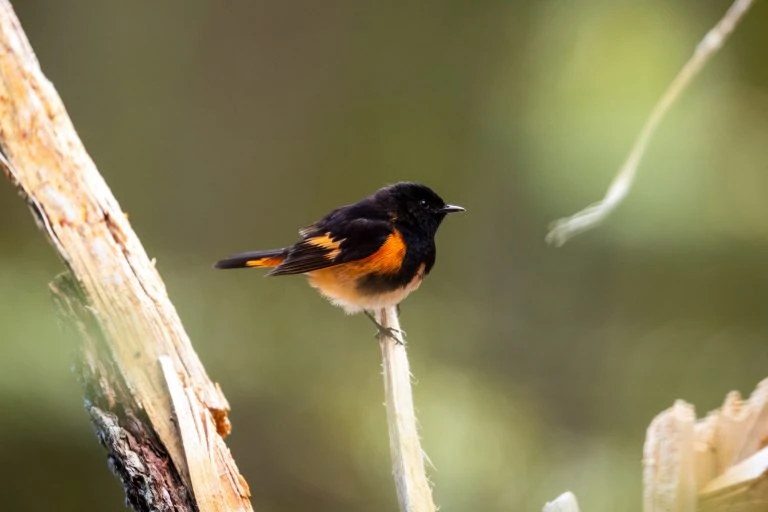
Male American Redstarts are mostly black with bright orange patches and a white belly. They have black heads, backs, and chests, orange along their flanks, and patches of orange on their wings and tails.
Females are olive-gray instead of black and have lots of yellow patches.
- Setophaga ruticilla
- Length: 4.3-5.1 in (11-13 cm)
- Weight: 0.2-0.3 oz (6-9 g)
- Wingspan: 6.3-7.5 in (16-19 cm)
American Redstarts breed in eastern US states and Canada and into northwestern US states. They may also be seen during migration in central and western US states.
You can find American Redstarts in deciduous woodlands eating insects and also in backyards and thickets eating berries such as serviceberry and magnolia.
American Redstart song: Their song drops in pitch at the end.
Nests of American Redstarts are close to the trunk in trees or large shrubs and are made from bark, grass, and other plant material. They lay up to five eggs which take just under two weeks to hatch and a week or two for the young to leave the nest.
Attract American Redstarts to your backyard with berry plants such as magnolia and serviceberry.
Fun Fact: American Redstart parents only feed certain chicks each rather than feeding them all.
12. American Robin
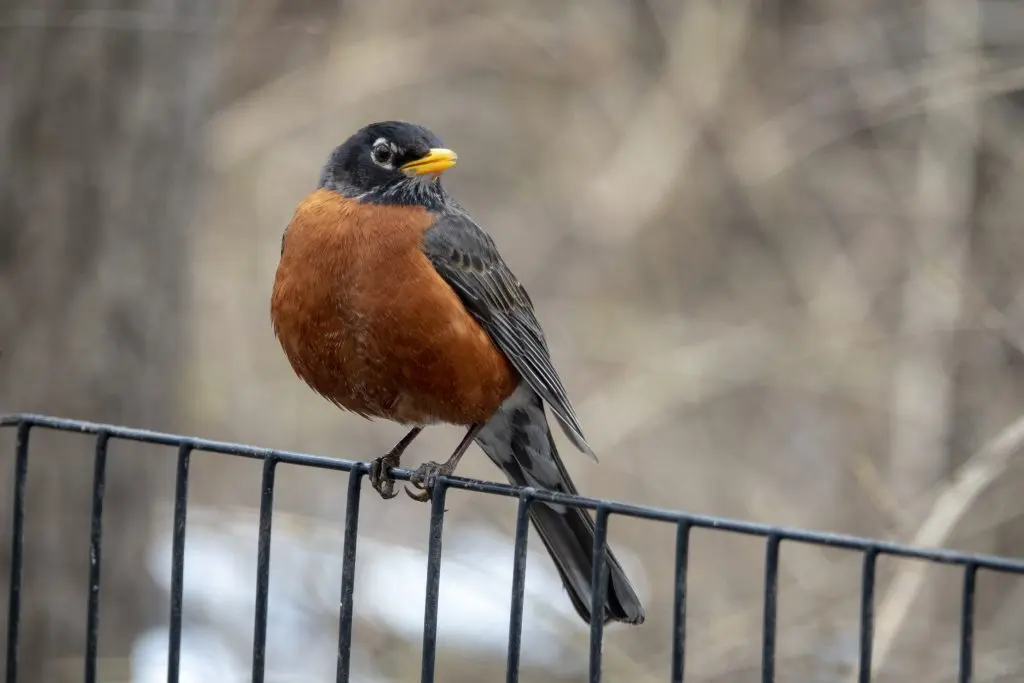
American Robins are a common sight on lawns eating earthworms. They have black heads and backs with red or orange breasts. They tend to roost in trees in winter, so you are more likely to see them in your backyard from spring.
- Turdus migratorius
- Length: 7.9-11.0 in (20-28 cm)
- Weight: 2.7-3.0 oz (77-85 g)
- Wingspan: 12.2-15.8 in (31-40 cm)
American Robins are residents in the lower 48 and the coast of Western Canada and Alaska. Those that breed in Canada and inland Alaska move south for the winter.
American Robins can be found in many habitats, from woodlands, forests, and mountains to fields, parks, and lawns. They eat earthworms, insects, snails, and fruit.
American Robin Song:
American Robin Call:
Attract American Robins to your backyard with sunflower seeds, suet and peanut hearts, fruit, and mealworms. Platform feeders are best or food scattered on the ground. Also, try planting some native plants that produce berries, such as juniper, sumac, hawthorn, and dogwood.
13. Black-headed Grosbeak
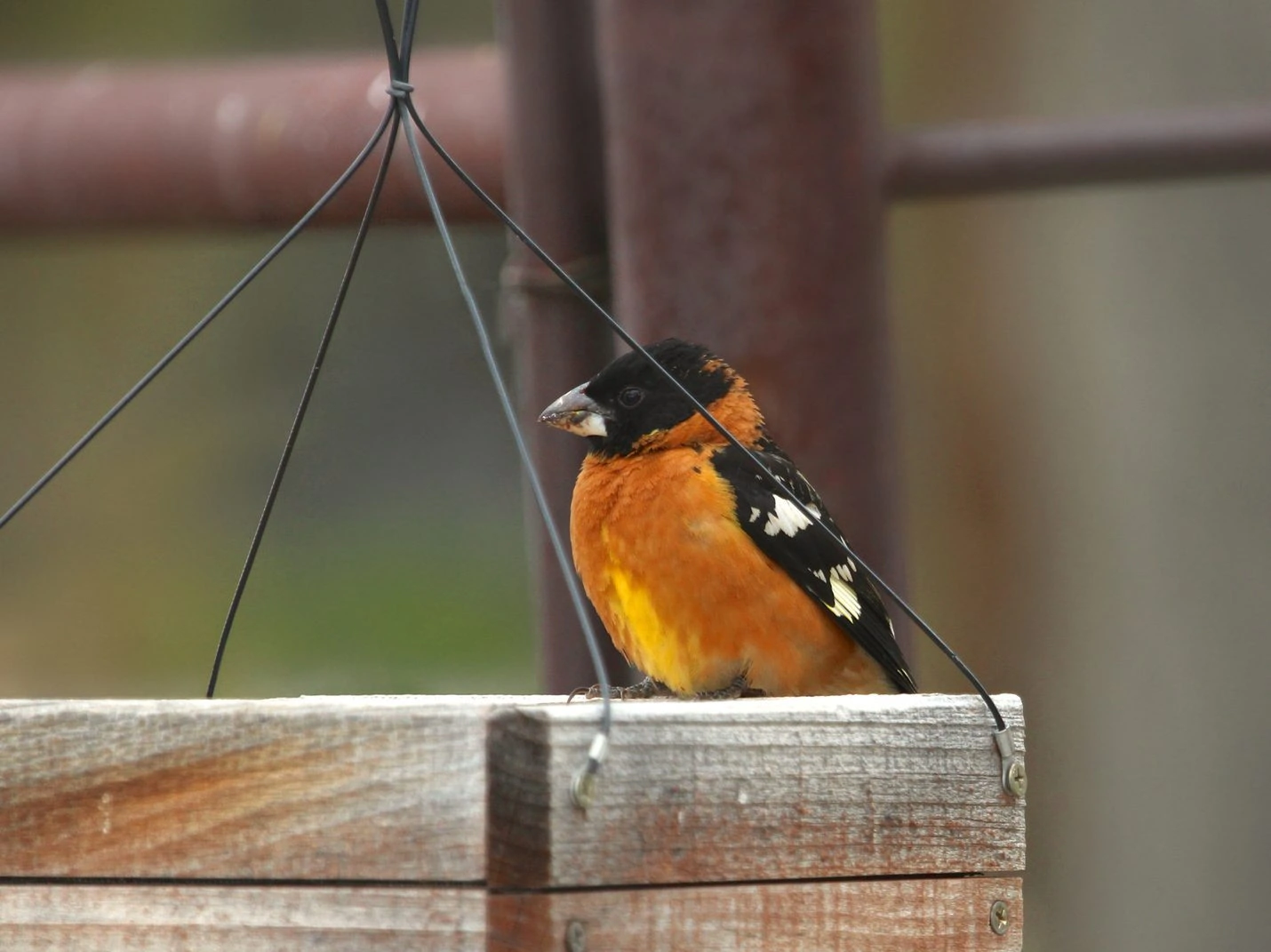
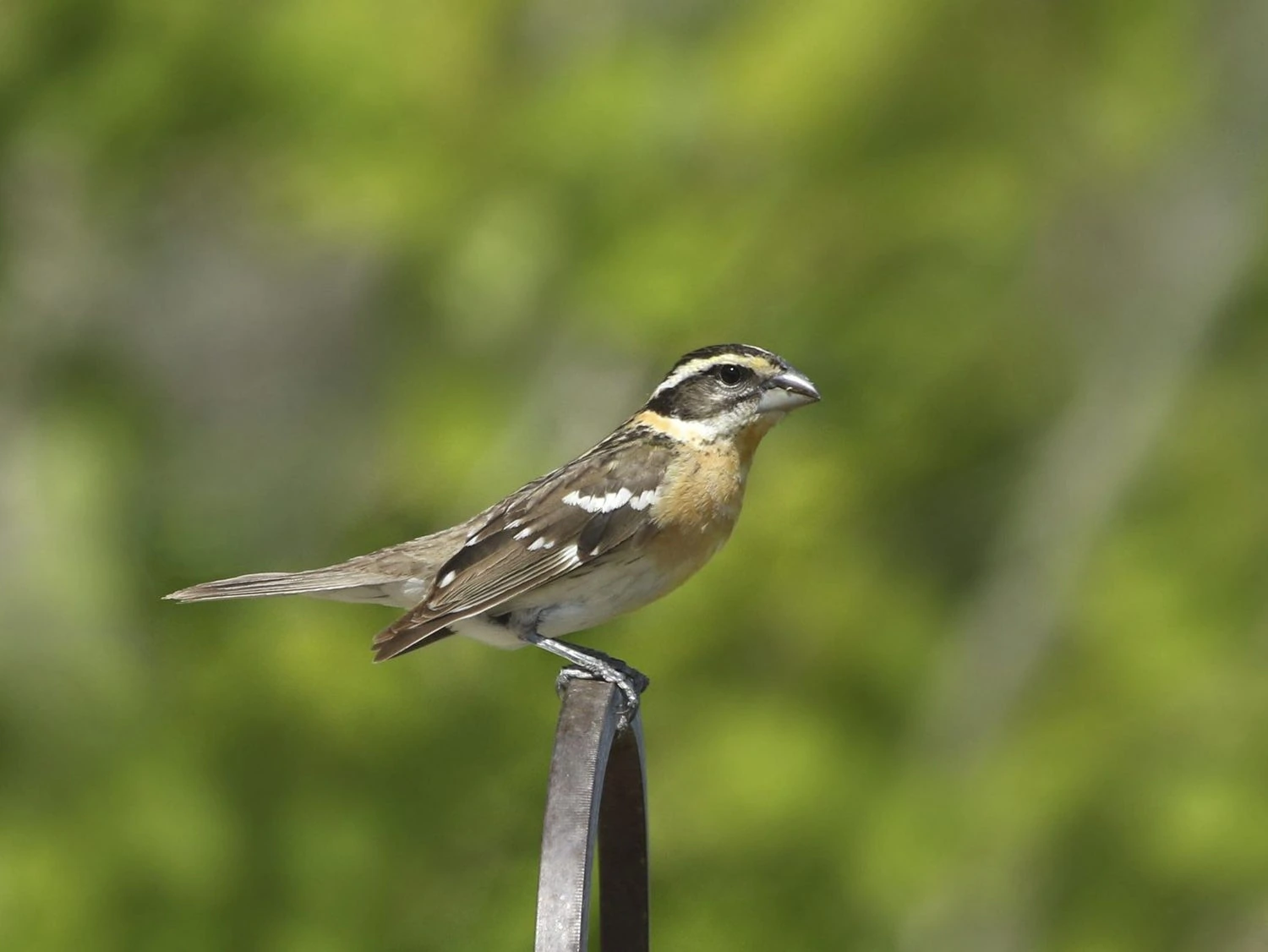
Black-headed Grosbeaks are large songbirds with orange breasts and throats and black wings and heads. Females are brown on the back and with brown spots on their pale orange breasts.
- Pheucticus melanocephalus
- Length: 7.1-7.5 in (18-19 cm)
- Weight: 1.2-1.7 oz (35-49 g)
- Wingspan: 12.6 in (32 cm)
Black-headed Grosbeaks breed in western US states and migrate to Mexico for the winter.
You can find Black-headed Grosbeaks in habitats with access to water, and they often visit backyards. Their large bills are great for crushing seeds and insects such as snails and beetles.
Black-headed Grosbeak Song:
Nests of Black-headed Grosbeaks are made from twigs, pine needles, and other plant material. They are loosely made but lined with softer material, including hair and stems. They lay up to five eggs, which take two weeks to hatch and up to two weeks for the young to leave the nest.
Attract Black-headed Grosbeaks to your backyard with sunflower seed feeders. They will also feed on oriole feeders.
Fun fact: Male Black-headed Grosbeaks court the females by singing while fluttering up and down from a perch with their wings spread to display their coloring.
14. Dark-eyed Junco
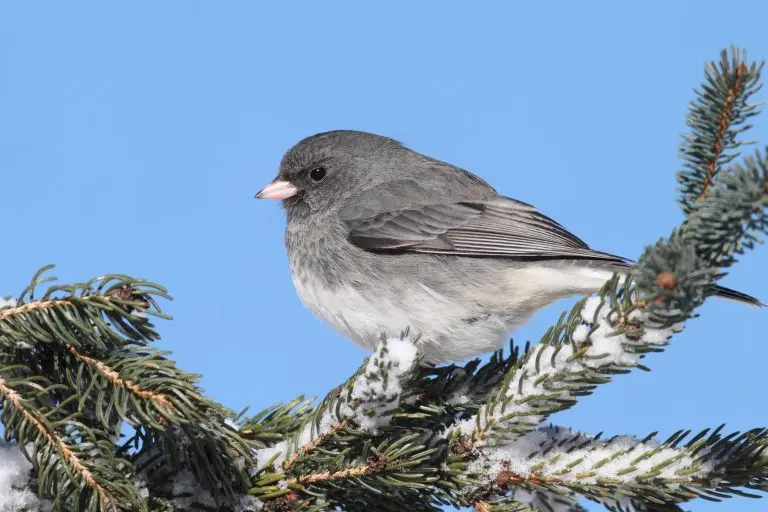
Dark-eyed Juncos are sparrows that are different colors depending on the state. They are generally slate-colored in the east and black, white, and brown in the west. They have darker heads and backs and are lighter underneath.
- Junco hyemalis
- Length: 5.5-6.3 in (14-16 cm)
- Weight: 0.6-1.1 oz (18-30 g)
- Wingspan: 7.1-9.8 in (18-25 cm)
Dark-eyed Juncos remain resident all year in northeastern and western US states and the Appalachian Mountains. Those that breed in Canada and Alaska migrate south in winter to the United States.
They can be found in open and partially wooded areas, often on the ground, and are common across the continent.
Dark-eyed Junco Song:
Attract Dark-eyed Juncos to backyard feeders with a variety of seeds such as black oil sunflower seeds, nyjer, cracked corn, millet, and peanuts. Platform feeders or scattered on the ground are best.
15. Northern Red Bishop
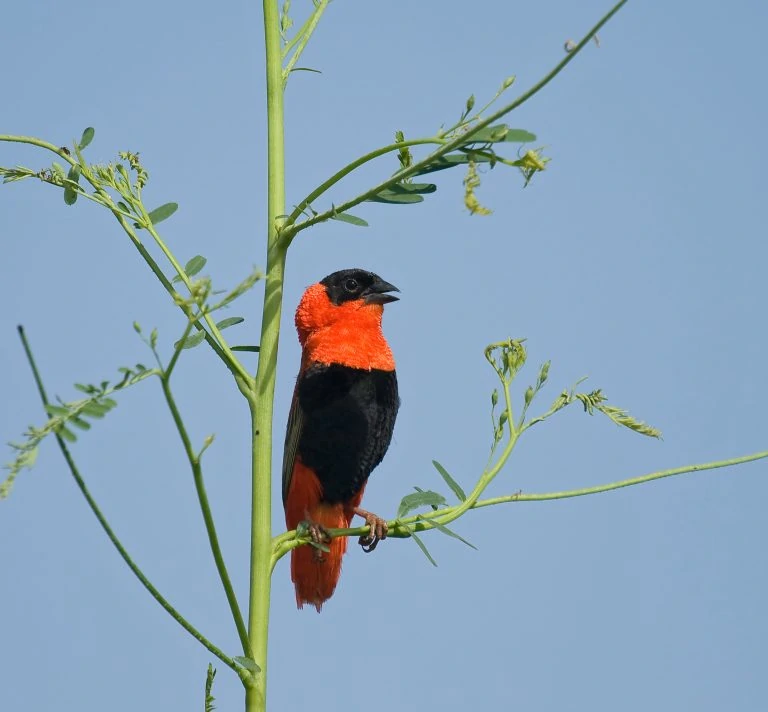
Northern Red Bishops are small weaver birds originally from Africa. Male birds have orange chests and back of the head and black bellies, and back in the breeding season, some tend to be more red and black. They also have a black face. Females are brown and white but with a similar pattern.
Northern Red Bishops are about 4 inches long and usually live in the tall grasslands of northern Africa. Populations thought to be from escaped pet birds now live in California and Texas, and Florida.
Their diet is seeds and insects, and the males build a spherical nest with an entrance on the side.
16. Western Spindalis
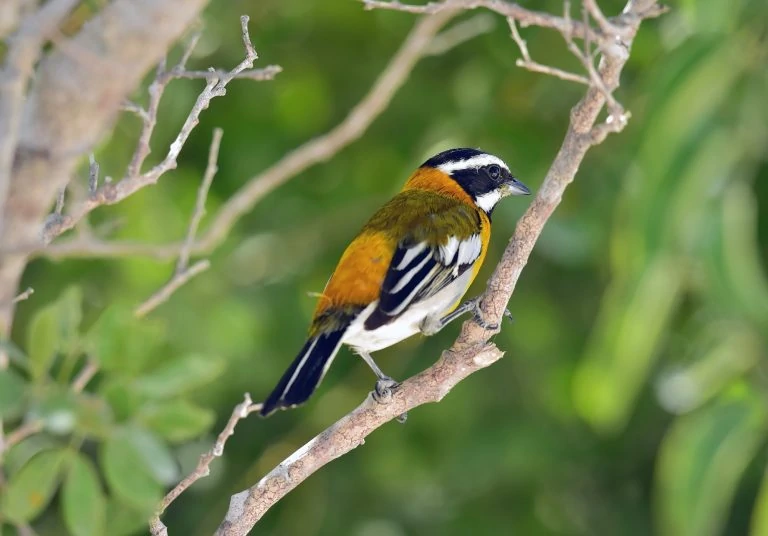
Western Spindalis males have bright orange chests and black-and-white striped heads. Their backs are either green or black with some orange color. Females are less bright but have similar coloring and patterns.
They live predominantly in the Caribbean, but they also are found in southern Florida. Western Spindalis Habitat is are subtropical and tropical forests.
Western Spindalis are songbirds that feed on fruit, berries, seeds, and insects. They make a small cup-shaped nest made from grass and weeds.
17. Scott’s Oriole
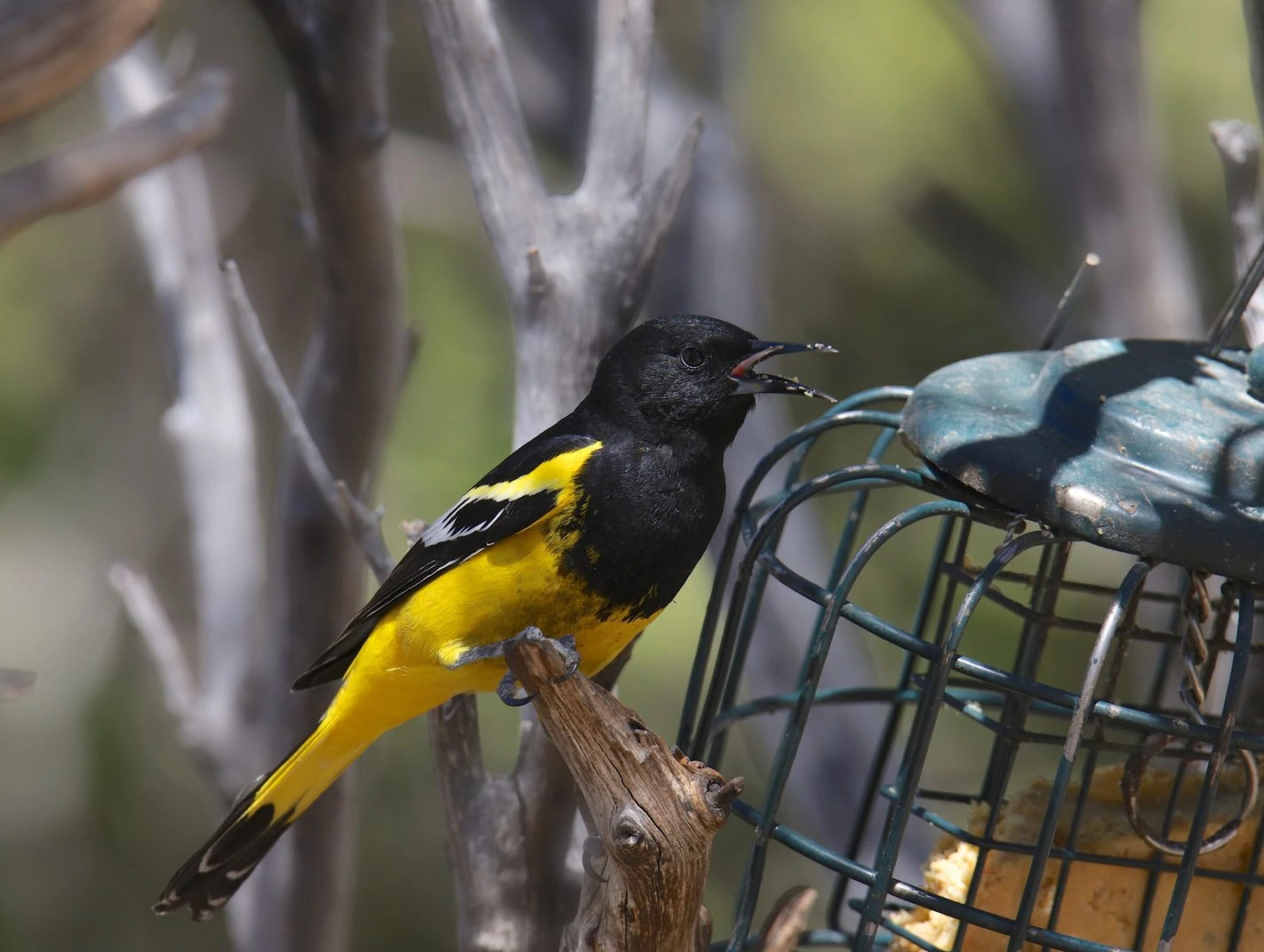
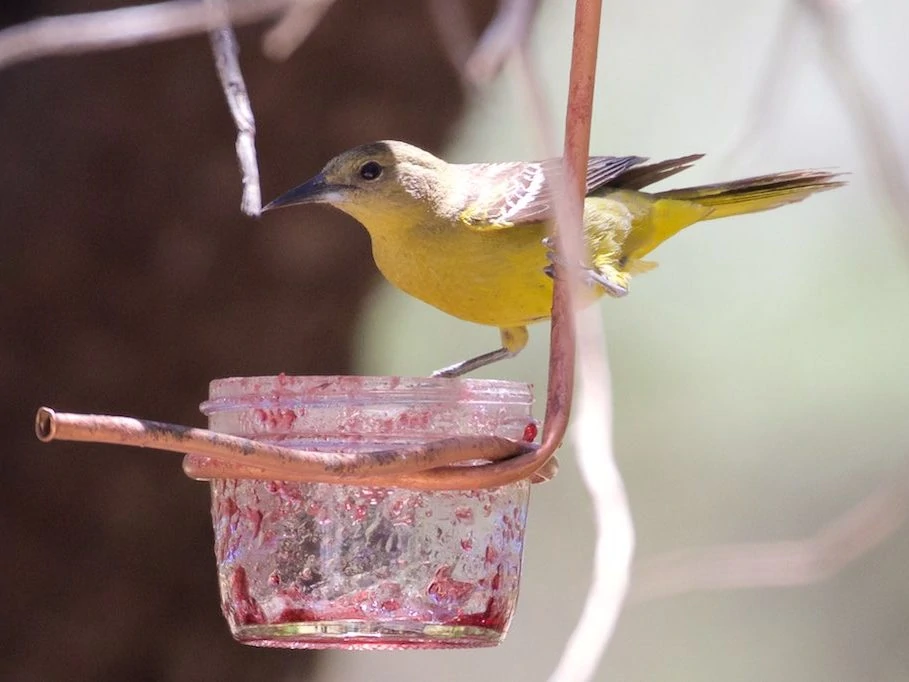
Males are a large distinctive oriole with bright yellow undersides, black heads, black backs, and have black under the tip of their tails. Females are a paler yellow with olive-brown backs.
- Icterus parisorum
- Length: 9.1 in (23 cm)
- Weight: 1.1-1.4 oz (32-41 g)
- Wingspan: 12.6 in (32 cm)
Scott’s Orioles breed in southwestern US states and northern Mexico before migrating south for winter. They also remain all year in southern Mexico and Baja California.
You can find Scott’s Orioles on higher slopes in arid areas feeding on insects, nectar, and fruit. They are often found on yuccas and begin singing before dawn.
Scott’s Oriole sounds: Their song is a sweet series of whistles and is less jumbled than some orioles songs.
Nests of Orchard Orioles are often quite low down at only 5 – 7 feet and are a basket of cactus fibers, grass, and yucca leaf. They may have 2 or 3 broods in a year.
Attract Scott’s Orioles to your backyard with sugar water, jelly, and oranges.
Fun fact: Scott’s Orioles will feed on toxic monarch butterflies by finding the ones with the least toxins and eating those.
18. Crimson-collared Grosbeak
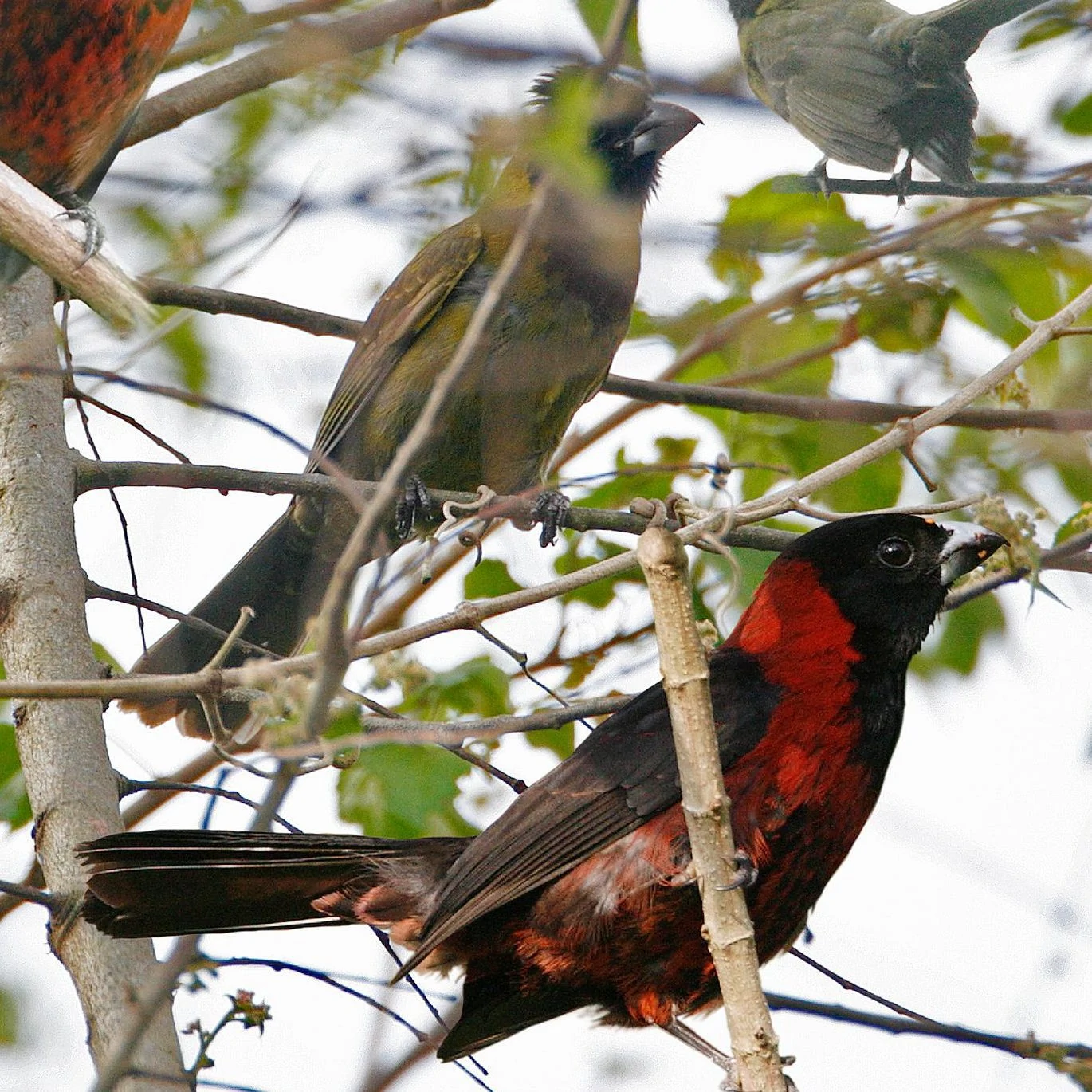
Crimson-collared Grosbeaks are medium-sized, stocky birds from the cardinal family. The male is remarkably striking with its black hood and bright crimson, sometimes pinkish-red collar and shoulders. Its belly is dotted with black. The female also has a black hood but has a greenish/yellowish body.
- Rhodothraupis celaeno
- Length: 8.0 – 9.25 inches (20.2 – 23.5 cm)
- Weight: 2.1 oz (60g)
Crimson-collard Grosbeaks live in northeastern Mexico, and they sometimes wander up to southern Texas.
You can find Crimson-collared Grosbeaks in humid or semi-dry forested areas, woodland edges, and dense, brushy thickets.
It is hard to know precisely what the Crimson-collared Grosbeak eats as it keeps itself hidden under dense cover when foraging. However, it probably feeds on fruits and berries, leaves, and insects.
Crimson-collard Grosbeak Song:
Nests of Crimson-collared Grosbeaks are made out of grasses and twigs, usually built on a bush, shrub, or low tree. They lay three eggs, but not much else is known about their young.
19. Varied Thrush
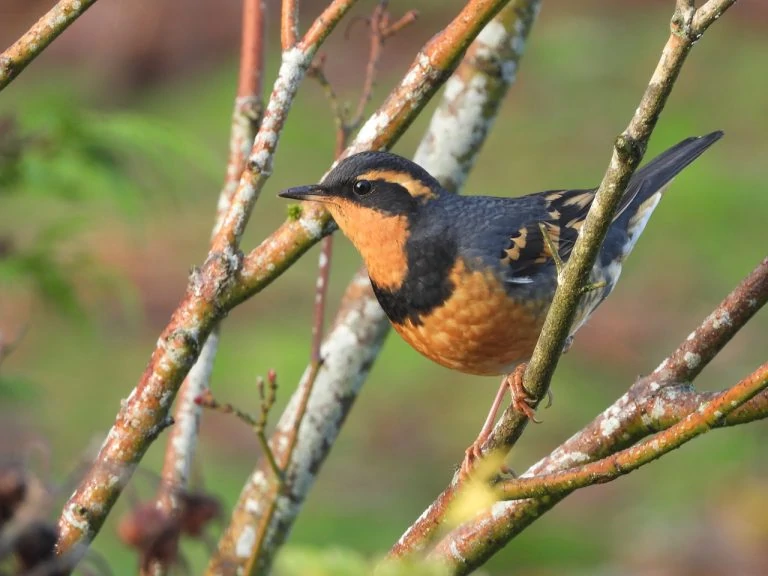
Varied Thrush males are birds with orange breasts and throats and black backs and with a black ‘necklace’ around the throat. The males also have orange bars on the wings and orange stripes on the sides of their black heads. Females are paler and have more brown tones on the back.
- Length: 7.5-10.2 in (19-26 cm)
- Weight: 2.3-3.5 oz (65-100 g)
- Wingspan: 13.4-15.0 in (34-38 cm)
Varied Thrush can be found along the Pacific Coast and Breed in Alaska and Northwestern Canada. Some remain all year in British Columbia and Northwestern US states along the coast. In winter, birds from Alaska and inland in Canada move south as far as California.
They are shy birds that hide in the forest looking for insects in the summer and berries and seeds in the winter.

